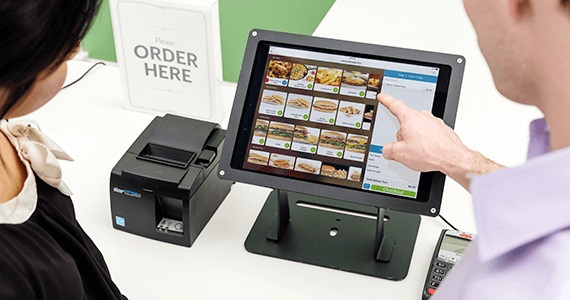In this Blog: Familiarize yourself with the latest digital transformation trends for 2023. Transform how you run business and experience exponential growth.
What Is Digital Transformation?
In an era where technology advances at an unprecedented pace, organizations must adapt or risk becoming obsolete. Digital transformation is the answer to this pressing need for adaptation. It represents a fundamental shift in the way businesses operate, leveraging cutting-edge technology to streamline processes, enhance efficiency, and ultimately drive growth.
Digital Transformation is a strategic imperative for businesses that involves overhauling traditional, often manual, processes that were prone to errors and delays. These outdated methods not only hindered productivity but also prevented organizations from keeping pace with the rapidly evolving market.
Through digital transformation, organizations undertake a comprehensive restructuring of their operations and administration by integrating technology into every facet of their business. This encompasses everything from customer interactions and data management to supply chain logistics and decision-making processes.
Wavetec’s Philosophy of Digitization

For over thirty years, Wavetec has stood at the forefront of the digital transformation movement. Wavetec introduced innovative solutions designed to revolutionize traditional processes, streamline workflows, and elevate the quality of customer service.
Wavetec’s forward-thinking solutions harness the power of technology, reimagining and redefining how organizations conduct their affairs.
These innovative solutions have been instrumental in digitizing processes that were once cumbersome and paper-based. The result? An array of modernized workflows that are more efficient, accurate, and responsive to evolving customer needs across various industries:
Banks
In the banking sector, Wavetec’s digital innovations have streamlined customer queuing, enhanced self-service options, and facilitated smoother transactions. The result is a more satisfying banking experience and improved customer relationships.
Hospitals
Wavetec’s solutions have optimized patient flow in healthcare centers, reducing waiting times and improving the overall patient experience. This ensures that healthcare providers can focus on what matters most: patient care.
Retail Stores
Retailers have benefited from Wavetec’s technology by creating frictionless shopping experiences. Queue management system, interactive kiosks, and way-finding digital signages are just a few examples of how they have transformed the retail landscape.
Government Service Centers
Wavetec’s influence extends to government service centers, where they have simplified bureaucratic processes and reduced wait times for citizens. This not only enhances public satisfaction but also contributes to more efficient governance.
Key Digital Transformation Trends For 2023

Wavetec keeps up with the latest digital transformation trends. Here is an overview of these trends:
Increased Adoption of Artificial Intelligence (AI) and Machine Learning (ML) Technologies
Artificial Intelligence refers to the simulation of human intelligence in machines, enabling them to perform tasks that typically require human intelligence, such as problem-solving, pattern recognition, and decision-making.
Machine Learning, a subset of Artificial Intelligence, involves training algorithms to learn from data and make predictions or decisions based on that data.
Here is how businesses are leveraging the potential of Artificial Intelligence and Machine Learning:
- AI powered chatbots are being used to engage and interact with the customers
- Personalized customer experience, based on customer’s history, is delivered using AI/ML
- Vast datasets are analyzed, enabling easier data-driven decision-making
- Repetitive business processes and tasks are automated
- Automated processes lead to cost savings and greater efficiency, having an overall positive impact on business performance
Artificial Intelligence and Machine Learning are becoming more integral to decision-making and other business processes. We are expecting to witness a deeper integration of AI-powered algorithms across industries for predictive analytics, automation, and improved customer experiences.
Digital Payments
Digital payments are on the rise, and business leaders are capitalizing on this trend to enhance services. They understand that customers increasingly prefer fast, secure, and convenient payment methods. To meet these preferences, businesses are diversifying their payment options, integrating secure payment gateways, and prioritizing data privacy.
Seamless integration of digital payment solutions simplifies transactions and provides valuable insights into customer behavior. Personalization and loyalty programs based on payment data enhance customer retention and targeted marketing efforts. Additionally, global expansion opportunities are unlocked as digital payments transcend geographical boundaries.
Forward-thinking businesses are even exploring cryptocurrencies as part of their digital transformation strategy and payment offerings. Digital payments will continue to reshape how the masses transact, with businesses at the forefront of this transformative shift.
Rise in Self-Service
Self-service solutions are gaining more popularity. They are reshaping how businesses interact with customers. This trend empowers customers with convenient tools like self-service portals, chatbots, and contactless services. It’s all about enabling users to find information, troubleshoot issues, and make transactions independently.
Businesses benefit by improving efficiency, reallocating resources, and enhancing customer satisfaction. Since the pandemic, there has been a rise in self-service and it is expected to continue to redefine customer interactions, offering greater autonomy and accessibility.
Edge Computing
Edge computing involves moving data processing and data analysis closer to where it’s generated, typically at or near the source of data. Simply put, it’s like having a mini-computer right where you need it, rather than sending all data to a centralized data center that is located hundreds or thousands of miles away.
Through this technology, you can streamline the the process of data analytics and get actionable insights faster. It also reduced the reliance on an internet connection.
In 2023, edge computing is gaining importance because it enables real-time processing for applications like the Internet of Things (IoT), where rapid decision-making is vital. It reduces the delay in data transmission, which is crucial for applications like self-driving cars, where split-second decisions are necessary for safety.
Edge computing also enhances security and privacy by keeping sensitive data closer to home, reducing the risk of data breaches during transit. To sum it all up, edge computing transforms how data is processed and used, making our digital world faster, safer, and more efficient.
Internet of Things
The Internet of Things (IoT) is defined by a network of interconnected devices and objects that can collect and exchange data. Businesses are harnessing the power of IoT to drive digital transformation by bridging the gap between the physical and digital worlds.
IoT devices, including sensors and smart appliances, enable data collection from the physical environment, providing real-time insights and informed decision-making. This technology optimizes processes, reduces downtime, enhances efficiency, and improves customer experiences across various sectors, such as manufacturing, retail, supply chain, and healthcare.
IoT applications are set to revolutionize industries further, enabling operational excellence, data-driven insights, and enhanced customer satisfaction.
Sustainability Integration
Sustainability is a fundamental aspect of business strategy. Digital transformation efforts increasingly incorporate sustainability initiatives, from optimizing energy use to reducing carbon footprints.
Wavetec is at the forefront of sustainability integration. They have introduced paperless queue management systems, reducing the amount of paper waste produced.
Big Data is Becoming Bigger, Faster, and Multidimensional
Big data refers to the vast amount of information generated every day. This data is generated of our daily activities including text messages we send, pictures we take, websites we visit, and the products we buy online.
Countless tiny pieces of information create big data; it’s so large and complex that it can’t be handled by traditional methods. Instead, powerful computers and special techniques are used to make sense of this enormous amount of information.
Today, big data is transforming business models and business processes. Businesses utilize big data to develop a deeper understanding of their customers and thus, get actionable insights to improve products and service, and even predict future trends.
More Focus on App Modernization
In recent times, there has been a lot of emphasis on modernizing apps. Through modernization, exceptional customer experiences are prioritized. The user interface is made more visually appealing, interactive, and easy to navigate. The user experience is kept is simple and straightforward, while allowing customers to execute several activities.
This is vital for businesses to remain competitive. We are expecting investment in modern apps that deliver seamless, personalized experiences.
Containerization is Key to Building Cloud-Native Apps
Containerization is a way to package software and its various components together in a standardized unit called a “container.” A container, in this case, is like a self-contained box that holds everything a software application needs to run, including the code, libraries, and system tools.
Containerization makes it easy to move applications between different computing environments, whether it’s your local computer, a data center, or the cloud.
Cloud-native apps are programs designed to leverage cloud computing resources and take full advantage of cloud services that are flexible and scalable. They are built with the cloud technologies in mind from the very beginning, often using microservices architecture, which means the app is divided into small, independent components that can be easily managed and scaled.
Containerization for building cloud-native apps is the process of using containers to package and deploy these cloud-native applications. It’s like putting each part of your application into its own container, making it more organized, simpler to develop, test, and deploy your app in the cloud.
This approach allows developers to create agile, scalable, and highly efficient applications that can seamlessly take advantage of the cloud’s capabilities, leading to faster development cycles and improved performance. In 2023, more businesses are adopting containerization to harness the power of cloud-native apps for their digital transformation efforts.
Wider Adoption of Low Code Platforms
Low-Code platforms are streamlining software development, allowing businesses to create applications with minimal coding expertise.
This trend enables faster innovation and empowers non-technical professionals to participate in app development. Low-Code platforms provide visual interfaces and pre-built modules, reducing the need for extensive manual coding and speeding up the development process.
Increased Focus on Cybersecurity
As digitalization accelerates and the reliance on data increases, cybercrimes also become more common. Consequently, Wavetec understands the importance of cybersecurity and places a heightened focus on strengthening cybersecurity measures to protect against evolving threats.
Wavetec employs various security models, AI-driven threat detection, and proactive risk management.
Customer Data Platforms
Businesses are centralizing customer data to create a 360-degree view, enabling personalized marketing, sales, and service. Customer data platforms, such as Spectra Dashboard, facilitate this data-driven approach, allowing for deeper customer insights and more effective engagement strategies.
Automation Takes Center Stage
Most businesses are now automating processes that were traditionally manual, and thus, more time-consuming as well. Automation not only speeds up the process, it also reduces the operational cost by improving the efficiency and reducing the reliance on staff.
As automation of processes takes over, the employees can invest their time and energy in stuff that is more important and may offer better business value.
Here is an example; supply chain management is now a fully-automated process; the staff working in the supply chain management can rely on digital processes for the execution of the tiresome, time-consuming tasks.
Why Should You Transform Your Business into the Digital Space?

In today’s fast-paced world, transforming your business into the digital space is no longer a choice but a necessity. Here’s why:
1. Meeting Elevated Customer Expectations
As technology advances, so do customer expectations. Digital transformation allows businesses to provide seamless, personalized, and an efficient customer experience, fostering customer loyalty.
2. Staying Competitive
Embracing digital transformation gives your business a competitive edge. It enables quick adaptation to market changes, faster innovation, and access to a global audience while maintaining cost-efficiency.
3. Improving Efficiency
Digital tools and automation streamline operations, reduce errors, and optimize resource allocation, leading to cost savings and increased productivity.
4. Data-Driven Insights
The digital shift generates valuable data for informed decision-making and strategy customization.
5. Expanding Market Reach
The digital space offers access to a global customer base, allowing businesses to explore new markets and revenue streams.
6. Future-Proofing
As technology evolves, digital transformation ensures your business remains adaptable and resilient.
7. Improved Agility
Digital businesses can pivot swiftly in response to market changes or disruptions, ensuring stability in uncertain times.
Developing a Digital Transformation Strategy in 2023

Initiating a digital transformation journey is rewarding, yet complex. To navigate this path effectively, you need a well-structured digital transformation roadmap that aligns with your organization’s goals and adapts to the rapidly evolving tech landscape.
Step 1: Begin by assessing your current state and defining a clear vision. Understand your organization’s strengths, weaknesses, and the areas where digitalization can bring significant improvements.
Step 2: Define specific, measurable objectives. Whether it’s enhancing customer experiences, streamlining operations, or entering new markets, having clear goals is crucial.
Step 3: Choose the right technologies that align with your objectives. This includes software, hardware, and infrastructure. Ensure they can scale to meet future needs.
Step 4: Develop a robust data strategy for effective insights. This involves collecting, storing, analyzing, and securing data.
Step 5: Recognize that digital transformation involves people and processes as much as technology. Prepare your workforce for change and equip them with necessary skills.
Step 6: As digital operations expand, prioritize cybersecurity and compliance with data protection regulations.
Step 7: Start with small-scale pilot projects to test and refine your strategy. This approach enables you to learn and adapt as you progress.
Step 8: Ensure your digital transformation efforts are scalable. Your strategy should accommodate growth and shifting market dynamics.
Amid the complexities of digital transformation, partnering with experts is invaluable. Wavetec, with over 30 years of experience at the forefront of digitalization, offers advanced solutions to streamline your transition into the digital era.
From enhancing customer experiences to optimizing processes, Wavetec leverages technology to redefine how organizations operate. As you embark on your digital journey, consider Wavetec as your trusted partner, guiding you toward a more efficient, innovative, and digitally-driven future.
Get in touch with Wavetec’s experts for successful digital transformation:
BOOK A FREE DEMO




